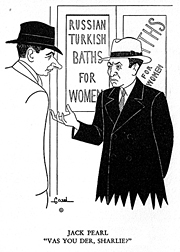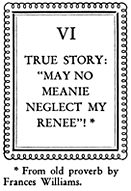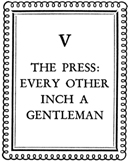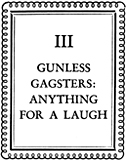In this week’s Snapshot in Prose, we visit not just one performer, but three: Mae West, Rudy Vallée, and Bing Crosby. It’s interesting to see what the attitudes toward these performers were in 1935. Pipe-smoking, sweater-wearing Bing Crosby as a “futuristic painter”? Who knew?
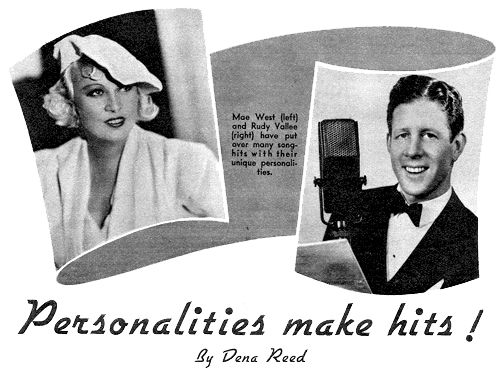
 Somewhere a voice is singing. A tenor, slightly off-key, is yodeling from the confines of his morning bath. Love in Bloom is being watered by splashes from the shower and is interrupted only when our singer asks for a towel.
Somewhere a voice is singing. A tenor, slightly off-key, is yodeling from the confines of his morning bath. Love in Bloom is being watered by splashes from the shower and is interrupted only when our singer asks for a towel.
Somewhere a voice is humming. A cracked soprano voice is coming from the cabinet files and trying to render Life Is Just a Bowl of Cherries. To her fellow workers that voice is making Life a Bowl of Lemons.
Somewhere a youth is whistling. He was coasting down the street on a bike and averring I’d Like to Spend One Hour with You.
Who is responsible for the bathtub tenor? Who inspired the filing clerk, who put the song into the heart of our bicycle boy?
Not just the songwriters, but the first one who injected into the songs enough of his personality and individuality to make the tunes stay in one’s memory. The bathtub singer is unconsciously imitating Bing Crosby, the filing cleark is secretly understudying Ethel Merman, while the boy on the bike is an embryo Eddie Cantor.
Lucky is the songwriter who has an ace performer to “introduce” a song. An introduction in this case means a lifetime acquaintance; it means that like love another hit is sweeping the country!
Who, for example, can take a song and make it a sensation quicker than Come-Up’n-See-Me-Sometime West? The lady of the curves may not have a soprano like Tetrazzini yet her aria, My Old Flame, or Troubled Waters, found more favor than Tettrazini’s Bell Song from “Lakme.”
For this West, where men are men who fall in love with her and women do their best to imitate her, has as much sex appeal in her voice as she has in her body. Close your eyes and picture a scene as Mae sings you her songs.
The humor of it, the meaning of it all is in her voice, in her insinuating drawl, in her half-closed eyes. It lies in the none too subtle movement of her hips. For West personifies what little children of my day used to call Sex. Her singing is frankly designed to appeal to the physical senses. Her voice conveys naughty meanings and we understand, laugh at it, and eat it up.
If West can’t help you throw off you inhibitions, no one can. Her songs, you will notice, bear titles in the manner in which Mae herself talks: I Like A Man Who Takes His Time, He’s A Ban Man But He Loves Me So Good, How’m I Doin’? Mae is doing very well, thank you, so well that we sing her songs to see if we can’t do a little better ourselves!
Why has practically every song Rudy Vallee introduced gone into the hit class? The answer is easy. Vallee gave the public something new. He coined the word “crooner” for us and then said it didn’t apply to him—but that was after his style was getting imitators.
Our ears, attuned to the none too gentle voices of blues singers, were duly grateful. We found we could take the cotton out of them and still not have them jarred. Here was a suave, young man; casual, soft and gentlemanly in his singing.
Poise and culture lay behind the tones. He sometimes sang more slowly than his orchestra—sometimes more quickly—but we knew he would come out right in the end and we liked this new rhythm.
To Bing Crosby goes the honor of having more men in showers trying to sing like him than any other singer in the country. Walk along the corridors of your apartment house any morning at seven-thirty (Sundays 9 to 12). There’ll be dozens of boo-boo-boo-boos accompanying the splashing.
Bing Crosby is to song what our futuristic painters are to art. Bing is a 1935 pleader. Take me, he says, or to hell with you. It’s all very casual and sophisticated.
It it remarkable, isn’t it, how these men and women have managed to convey so much of their personalities to their voices and how this personality made hits emerge from Tin-Pan-Alley? The people who make some darned tune run around in our heads are the little tin gods of the songwriters. What shall we do with them—kiss ’em or kill ’em?



